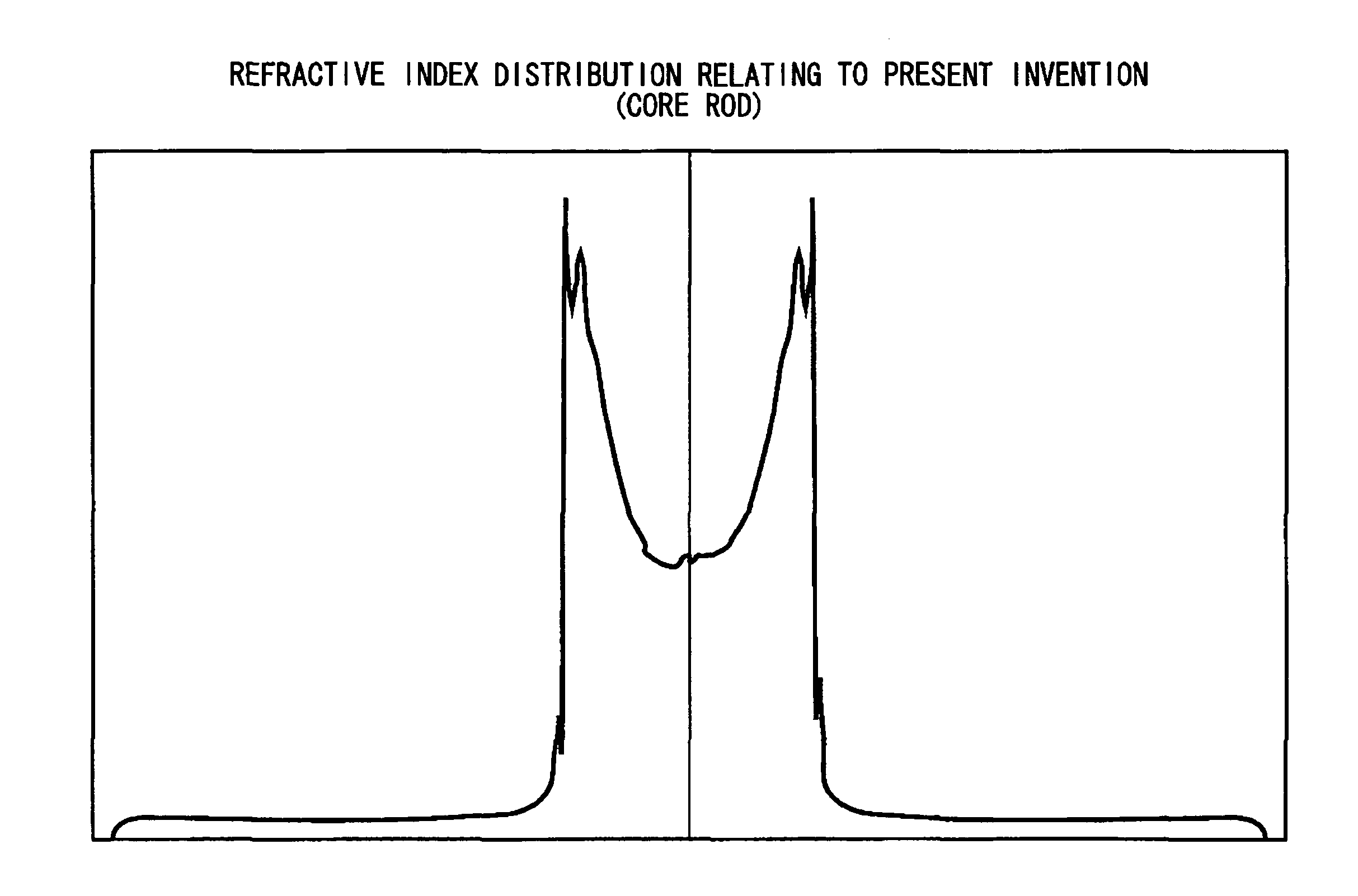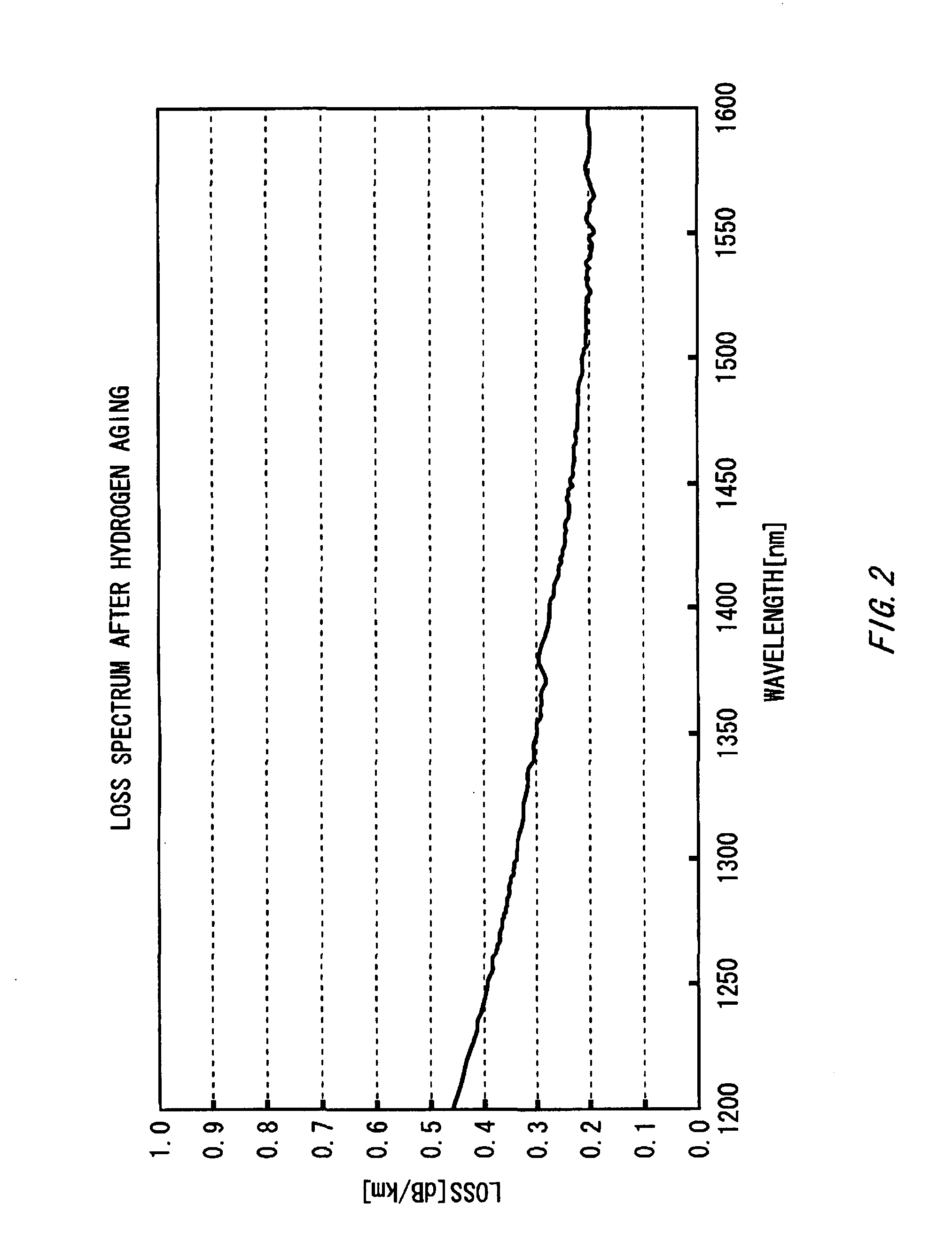Optical fiber
a technology of optical fiber and fiber, applied in the field of optical fiber, can solve the problems of degrading the signal, increasing the scattering intensity, and not enhancing the intensity of the actual transmitted signal, and achieve the effects of low cost, high threshold value, and same mode field diameter (mfd)
- Summary
- Abstract
- Description
- Claims
- Application Information
AI Technical Summary
Benefits of technology
Problems solved by technology
Method used
Image
Examples
embodiment
First Embodiment
[0039]A core rod including therein a core and a clad is manufactured by means of the vapor phase axial deposition (MAD) method. The manufactured core rod has the refractive index profile shown in FIG. 1. As shown in FIG. 1, the refractive index distribution of the core rod has a unique profile in which the refractive index increases in a substantially continuous manner from the vicinity of the center towards the external surface and symmetrical peaks are formed at positions substantially corresponding to the external periphery of the core. Outside the peaks in the refractive index profile, the refractive index radically drops. Therefore, the portions in the refractive index profile outside the peaks correspond to the clad. Here, when an optical fiber having a diameter of 125 μm is manufactured from the above-mentioned core rod, the core of the manufactured optical fiber has an effective diameter of 8.3 μm.
[0040]The core rod is manufactured by performing deposition wi...
PUM
 Login to View More
Login to View More Abstract
Description
Claims
Application Information
 Login to View More
Login to View More - R&D
- Intellectual Property
- Life Sciences
- Materials
- Tech Scout
- Unparalleled Data Quality
- Higher Quality Content
- 60% Fewer Hallucinations
Browse by: Latest US Patents, China's latest patents, Technical Efficacy Thesaurus, Application Domain, Technology Topic, Popular Technical Reports.
© 2025 PatSnap. All rights reserved.Legal|Privacy policy|Modern Slavery Act Transparency Statement|Sitemap|About US| Contact US: help@patsnap.com



